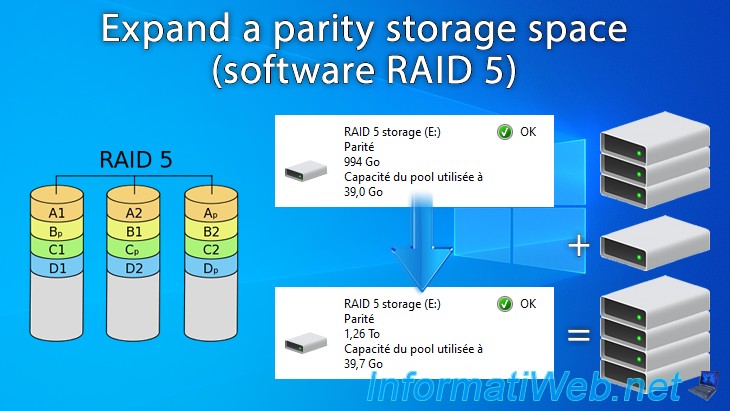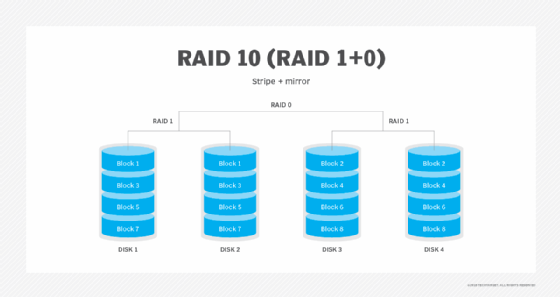RAID capacity optimization involves balancing storage efficiency and redundancy by selecting the appropriate RAID level and tuning configurations to meet specific performance and data protection needs.
To optimize capacity while ensuring redundancy, consider these key points:
-
RAID Levels and Trade-offs:
- RAID 0 offers maximum storage efficiency and performance by striping data across disks but provides no redundancy, so any disk failure results in data loss.
- RAID 1 mirrors data, providing full redundancy but effectively halves usable capacity since data is duplicated.
- RAID 5 and RAID 6 use parity to provide redundancy with less capacity overhead than mirroring, balancing storage efficiency and fault tolerance. RAID 5 can tolerate one disk failure, RAID 6 can tolerate two.
- RAID 10 combines mirroring and striping, offering high performance and redundancy but with a 50% capacity overhead like RAID 1.
-
Performance vs. Redundancy:
The choice depends on workload characteristics and criticality of data. For example, RAID 0 suits high-speed, non-critical data, while RAID 1 or RAID 5 suits environments prioritizing data safety. -
Distributing I/O Load:
RAID configurations optimize random access I/O by evenly distributing I/O requests across member disks, reducing queue wait times and improving performance. -
Advanced Optimization Techniques:
- Tuning RAID controller cache settings (read-ahead, write-behind, cache block sizes) can enhance performance depending on workload patterns.
- Thin provisioning can improve effective storage utilization by over-allocating capacity based on historical usage trends, though it requires careful monitoring to avoid bottlenecks.
-
Capacity Efficiency Considerations:
Raw capacity is reduced by redundancy overhead, so selecting RAID levels that match your tolerance for data loss and performance needs is essential. Combining RAID with data reduction techniques like compression and deduplication can further optimize usable capacity.
In summary, balancing storage efficiency and redundancy in RAID requires selecting the RAID level that aligns with your data protection needs and workload, tuning controller settings for performance, and applying capacity optimization techniques like thin provisioning and data reduction where appropriate. This approach ensures a tailored balance between maximizing usable storage and maintaining data integrity.




















Maple Ranking offers the highest quality website traffic services in Canada. We provide a variety of traffic services for our clients, including website traffic, desktop traffic, mobile traffic, Google traffic, search traffic, eCommerce traffic, YouTube traffic, and TikTok traffic. Our website boasts a 100% customer satisfaction rate, so you can confidently purchase large amounts of SEO traffic online. For just 720 PHP per month, you can immediately increase website traffic, improve SEO performance, and boost sales!
Having trouble choosing a traffic package? Contact us, and our staff will assist you.
Free consultation